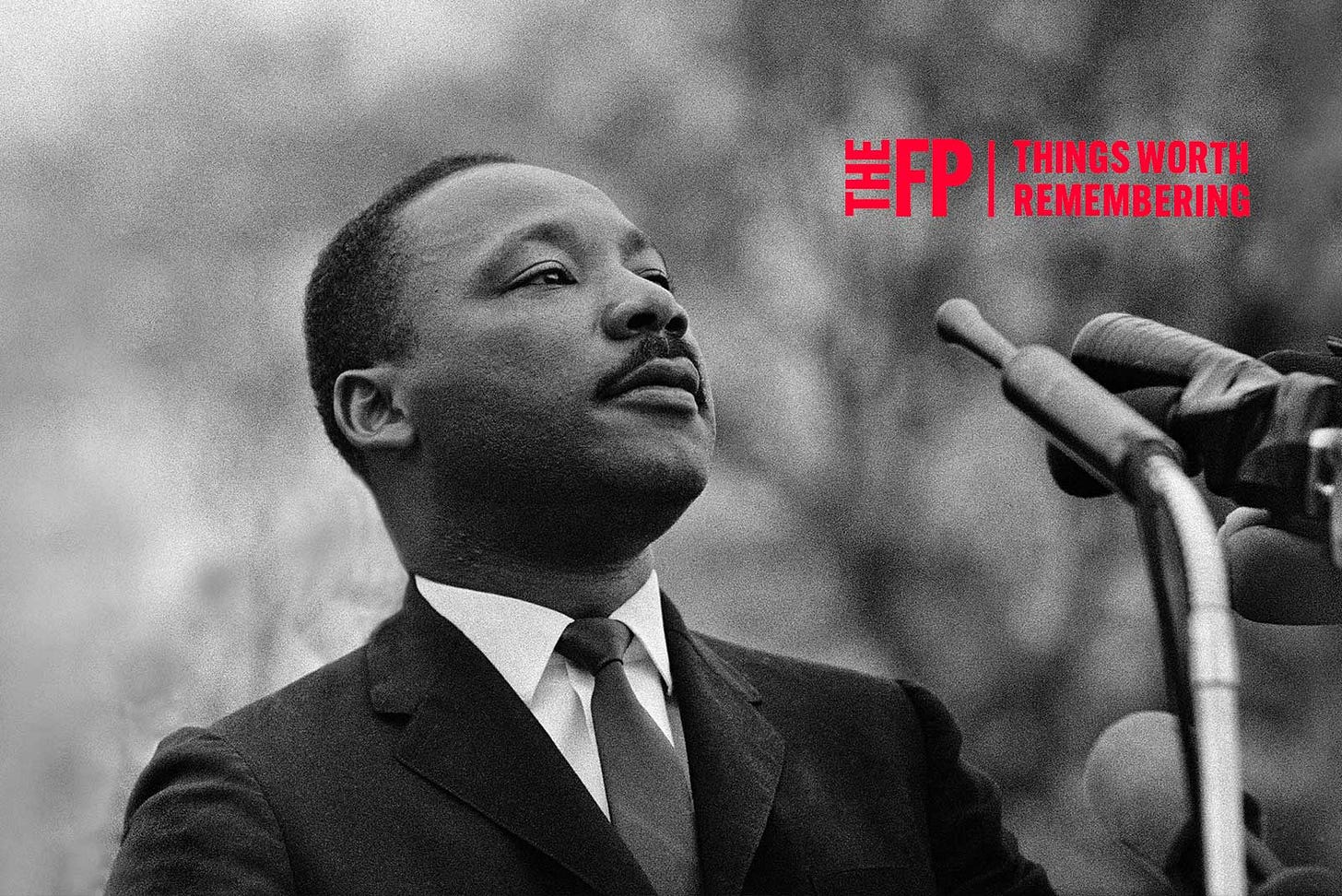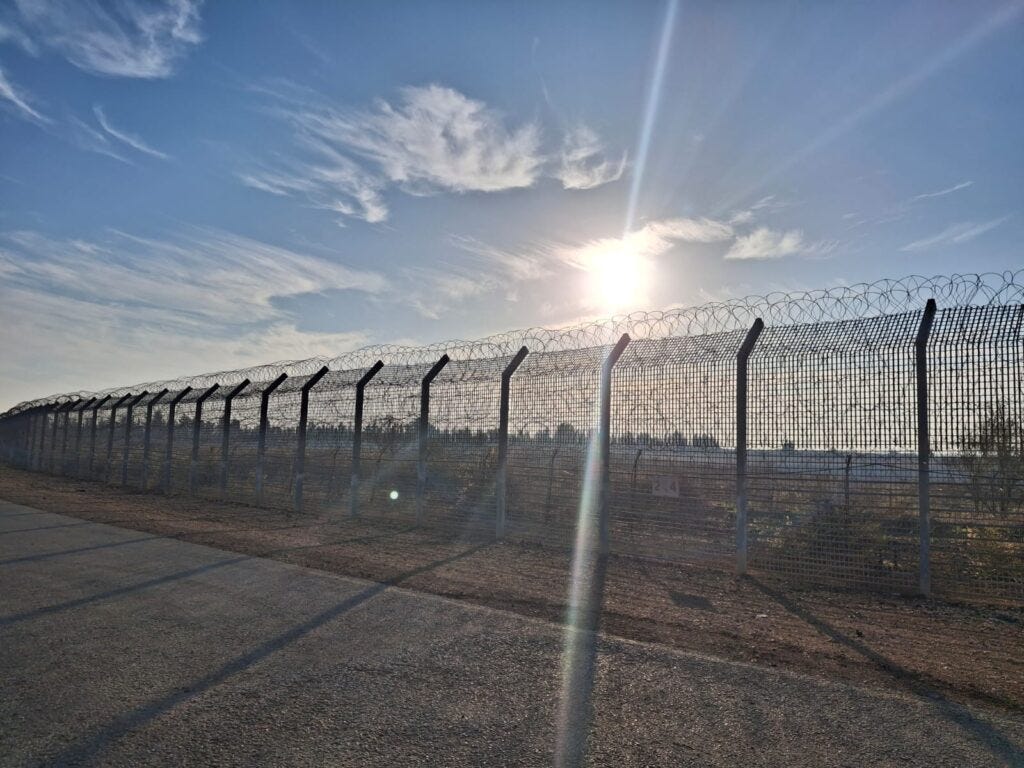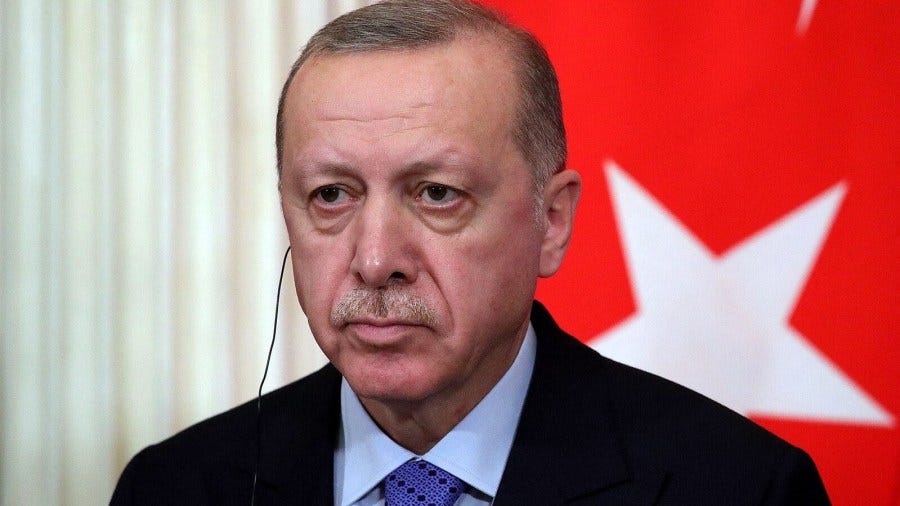Will the Guns Roar Again? – The Fragile Ceasefire Between Israel and Hezbollah
January 25, 2024 - Issue #71
Thank you to all my subscribers and followers. You honor me with your presence. If you think this article of value, please share it with others. Please also consider indicating if you see value in the article by “liking” it or adding a comment. Doing so helps me determine the subject of future articles that you might find beneficial and, through social media, broadcasts my work to a wider audience.
On December 1, I wrote in Issue #65 of this newsletter regarding the ceasefire between Israel and Hezbollah (an issue I suggest you review for important background if you are a new subscriber):
“On Wednesday, November 27, 2024, at 4:00 AM, the guns fell rather silent in Lebanon and northern Israel. But the Third Lebanon War did not end. Hezbollah’s desire to destroy Israel did not end. And Iran’s “Axis of Resistance” proxy strategy did not end, it just lost a battle.”
Now, sixty days later, the day Israel was to complete its withdrawal from Lebanon, the guns may again soon roar in the north.
Why?
Because Lebanon has not fulfilled its responsibilities pursuant to the ceasefire agreement to ensure that Hezbollah has not maintained any “weapons or military infrastructure” in southern Lebanon within approximately eighteen miles of Israel as delineated on a map that is part of the agreement. Nor has Hezbollah shown much, if any, indication of withdrawing and destroying its terror infrastructure in southern Lebanon on its own volition. As a result, Hezbollah remains a nearby danger to Israeli communities making it impossible for Israel to fulfill its goal of returning northern residents to their homes along the border in March. Because of that, Israel has decided not to withdraw from some thin swathes of land, mostly in the eastern portions of the border region, that the Lebanese Armed Forces (LAF) have not yet demonstrated readiness to take control of.
Israel’s refusal to allow Hezbollah to reform and reconstitute itself in areas it had agreed to withdraw from does not make Hezbollah happy. Will that unhappiness lead to a renewal of the third Lebanon War?
Let’s dig deeper.
The ceasefire agreement that came into effect in late November had three main parts:
Going forward, only the LAF, other Lebanese government security entities, and UNIFIL will have the right to bear arms or maintain military infrastructure in large portions of southern Lebanon (delineated by an attached map) and Lebanon will prevent Hezbollah or any other armed group from attacking Israel while also preventing resupply of their weaponry.
By the 60th day (January 26) after the ceasefire goes into effect, Israel will withdraw its forces from Lebanon and the LAF will flow into southern Lebanon, replace all IDF forces, and dismantle any Hezbollah or other non-state actor military sites and confiscate non-authorized weapons in the designated southern Lebanon region. This was envisioned as a phased process.
Israel has the right to respond to threats it discovers in southern Lebanon and that should the ceasefire deal be broken in the designated area of southern Lebanon; Israel can act at any time but where not urgent, it is first to report violations to a designated “Mechanism” chaired by an American military officer to provide the mechanism with an opportunity to see that the violations are resolved. Outside southern Lebanon, Israel is constrained from responding to threats stemming from other regions of Lebanon unless the LAF is unable or unwilling to deal with the violations (presumably in an emergency Israel will do what it has to do).
Unfortunately, the LAF has not done its part and there is little reporting that the Mechanism is working other than a couple rather generic sounding comments issued by the U.S. Embassy in Lebanon extolling the supposed virtues of the LAF’s operation of checkpoints and patrols, reconstruction efforts, and destruction of some weapons found—all in southwest Lebanon.
But what about in the the south-center and south-east Lebanon!
Really? Who is kidding who?
All of southern Lebanon is awash in Hezbollah weapons and infrastructure. And outside the two-mile area in which the IDF operated, likely loaded with Hezbollah’s personnel now dressed as civilians. The IDF has done its best within the spirit of the ceasefire to whittle down Hezbollah’s capability for creating mayhem in Israel. In furtherance of that, recently the IDF has (mostly if not always after informing the Mechanism to no avail):
On January 13, engaged in multiple airstrikes, including against a Hezbollah rocket launcher site and a smuggling route used to sneak weapons into Lebanon from Syria.
On January 11, destroyed a truck, loaded with weaponry near Israeli held Mount Dov.
On January 2 and again on January 12, struck rocket launchers in Nabatiyeh.
Found in Lebanese villages near Israel’s border numerous rocket launchers, hundreds of mortar shells, shoulder-launched missiles, and plenty of other military equipment. Not one time but cumulatively on an almost daily basis.
Continued to discover Hezbollah military tunnels.
And, since the ceasefire began, the IDF has killed, mostly in the first month, about fifty Hezbollah operatives in the region.
What has the LAF and UNIFIL done? UN Secretary General Guterres (not a friend of Israel) said after recently visiting the region that UNIFIL (maybe in conjunction with the LAF) had found more than 100 weapons depots belonging to Hezbollah and its allies in southern Lebanon. He didn’t specify where and in what quantities and he didn’t provide any proof. In fact, the only documentary proof I could find that the LAF had found any weapons and was disposing of them is the picture below of several old missiles disorderly piled, with soldiers standing over them. It hardly looks like a Hezbollah weapon depot.
Moreover, this photo is not clear because of the obvious age of the missiles and their uncertain origin. Were they Hezbollah’s missiles, or old Palestinian missiles dating from the 1970’s in the LAF’s possession and trotted out for demonstration purposes? We don’t know.
In a prescient article written by Dana Pollak of the Alma Center, titled, The Test of The Israeli-Hezbollah Ceasefire: Areas South of The Litani Where the IDF Did Not Maneuver, Pollak convincingly argues “The most significant test of the agreement will be the Lebanese army’s activity in areas south of the Litani, where the IDF did not maneuver on the ground and where a large number of weapons and Hezbollah terrorist infrastructure remain unaddressed.” During the active fighting phase in October and November, the IDF found within a couple miles of the border about 7,000 RPG and anti-tank launchers (including rockets and missiles), 9,000 IEDs, 2,700 weapons and assault rifles, 60 anti-aircraft missiles, 20 vehicles, about 2,000 shells and rockets, along with vast quantities of other military equipment. Beyond those two miles, stretches a 16 mile region with numerous villages that are teeming with Hezbollah’s weapons. Knowing this to be the case, one would think the LAF, and the Mechanism, would loudly trumpet their successes throughout southern Lebanon and drag western press to numerous sites to document their destruction and recovery of weapons. Instead, the silence has been telling. Thorough, or even any inspection, likely has just not been happening. Thus, Hezbollah certainly remains well ensconced in southern Lebanon, with much of its weapons and infrastructure in place. It’s Lebanon’s responsibility to get rid of it all. Until it does, that does not bode well for Israelis near the border.
Which leads me to Israel’s decision not to complete its withdrawal from Lebanon on the sixtieth day. Justifiably concerned that its forces still find Hezbollah armaments and tunnel infrastructure in the narrow swath of land it still holds, Israel publicly warned on multiple occasions through different outlets that given the LAF’s slow pace, the IDF would not withdraw where its absence would leave a vacuum. Mostly, this is in southeast Lebanon. That angered Hezbollah who made threatening statements. Those warnings were matched by stern words from Lebanon’s new president, Joseph Aoun, who was the former commander of the ineffectual and/or complicit with Hezbollah—LAF, and Lebanon’s new Prime Minister, Nawaf Salam who most recently was the head of the International Court of Justice who had before him the genocide accusations brought by South Africa against Israel. As such, Israel’s warnings were not met with Lebanese action.
This led to Israel’s security cabinet declaring on January 23 that the IDF would stay in Lebanon past the sixty day deadline for withdrawal because leaving Lebanon is “conditional on the Lebanese army deploying in southern Lebanon and fully and effectively enforcing the agreement, while Hezbollah withdraws beyond the Litani River,” and that "‘Since the ceasefire agreement has not yet been fully enforced by the state of Lebanon, the gradual withdrawal process will continue, in full coordination with the United States.”
This decision should come as no surprise to anyone, especially those that are party to the agreement or its mediators because since October 7, Israel will no longer depend on deterring terrorists on its borders—it will either destroy them or push them back. That is not a choice now being made; it is a necessity for survival. And everyone knows it even if they do not like it. Therefore, justifiably so, the last thing Israel will allow is Hezbollah and Lebanon to water down the agreement by shirking their responsibilities while impairing the IDF from keeping its obligation to keep Israelis safe. Even Benny Gantz, former IDF Chief of Staff, now political leader of an opposition party, and hardly a friend of Netanyahu these days, said, "It is imperative to prioritize the security of northern residents and ensure that the threat to northern communities does not reemerge. Otherwise, we have learned nothing from October 7."
The day of Israel being the frog, ignoring the slowly heating pot of water it is in is over. No longer can Israel wait for things to come to a boil. Even minute transgressions will, and must, be dealt with forcefully lest they lead to something much worse (we are now seeing this play out with Hamas playing games with what was previously agreed regarding the order of hostage releases to which Israel responded by preventing Gazans from flowing into northern Gaza until civilian female hostage Arbel Yehoud is released, and just in, Hamas failing to provide the required hostage status report).
Fortunately, the United States agrees with Israel’s position regarding withdrawing from Lebanon. On January 24, the Trump administration called for a “short, temporary extension” of the IDF’s presence in Lebanon. France, never consistent in these things, seems to be at least a little bit on board. And, White House National Security Council spokesperson Brian Hughes said in a statement. “All parties share the goal of ensuring Hezbollah does not have the ability to threaten the Lebanese people or their neighbors. To achieve these goals, a short, temporary ceasefire extension is urgently needed.”
Now, the ball is in Hezbollah’s court. Will it launch a steady stream of just venomous words, or will its missiles fly? Meanwhile, will Lebanon’s Aoun government get the message that it is no longer business as usual? The LAF has had sixty days to act and has failed to fulfill its mission. President Aoun, who has been in office since January 9, has obviously had much less time to change the timeless dynamic of favoring Hezbollah over the needs of Lebanon. Will he now do so? If past is prologue, then the answer is no. But, in his inaugural speech, Aoun said that he would be “working to ensure the state’s right to hold a monopoly on weapons”. Meanwhile, although the newly installed Prime Minister Salam does not favor Israel, many believe him to be corruption free and a “quiet critic of Hezbollah.”
Now, with the sixth day upon us, we shall see.

Has The Threat from Syria Disappeared? The Large Quantities of Weapons Near The Border and The Potential For an Invasion of Israel—Written by Tal Beeri for the Alma Research and Education Center—January 19, 2025
Turkey’s New Threat to Israel—Written by Yoni Ben Menachem for the Jerusalem Center for Security and Foreign Affairs—January 15, 2025

An Obscene Spectacle—Written by Melanie Phillips January 19, 2025
How the IDF Prepared for Romi, Emily and Doron’s Return Home—Written by LTC Nadav Shoshani, IDF International Spokesperson for the IDF—January 24, 2025
Replacing UNRWA Is an Opportunity Trump Should Not Miss—Written by Robert Satloff for The Washington Institute for Near East Policy—January 15, 2025
The Role of Iraqi Shia Militias as Proxies in Iran’s Axis of Resistance—Written by Edmund Fitton-Brown for The Foundation for Defense of Democracies—January 14, 2025
Why Iran-Backed Militias in Iraq are Tehran's Most Resilient Proxies - Analysis—Written by Eric Mandel for the Jerusalem Post—January 11, 2025
Where Misinformation Proliferates: How to Make Social Media Less Awful - Opinion—Written by Gil Hoffman for the Jerusalem Post—January 19, 2025

Things Worth Remembering: The Zionism of Martin Luther King—Written by Douglas Murray for the Free Press—January 19, 2025

Former Operation Good Neighbor Cmdr.: Israel's Humanitarian Efforts Still Resonate in Syria—Written by Ohad Merlin for the Jerusalem Post—January 18, 2025

The Dirty Politics of a Hostage Deal—Written by Joshua Hoffman for the Future of Jewish—January 18, 2025
Dichter to 'Post': Ministers Opposing Hostage Deal Don't Understand the Situation - Interview—Written by Eliav Breur for the Jerusalem Post—January 25, 2025

Yemen's Houthis to Target Only Israel-Linked Vessels Following Gaza Deal—Written by Reuters and published by The Jerusalem Post—January 20, 2025
Israel’s Struggle with Hezbollah—A War Without End is now available in eBook and hardback format on Amazon and IngramSpark. This compelling narrative explores Hezbollah’s origins and cancerous growth, traces Israel’s response, and reveals Israel’s present readiness to meet Hezbollah’s challenge.
Cliff Sobin
Important Link—Alma Research and Education Center: Understanding the Security Challenges on Israel’s Northern Border










You raise the important points here and this is why I am, at 6:20 in the morning, a bit anxious, wondering if missile alerts are going to be going off again.
This has all the makings of a rinse and repeat. Aoun appears as toothless as his predecessors. If all the banking continues as before, does that mean the principal pressure continues from Iran? If so, when will Iran be effectually dealt with?